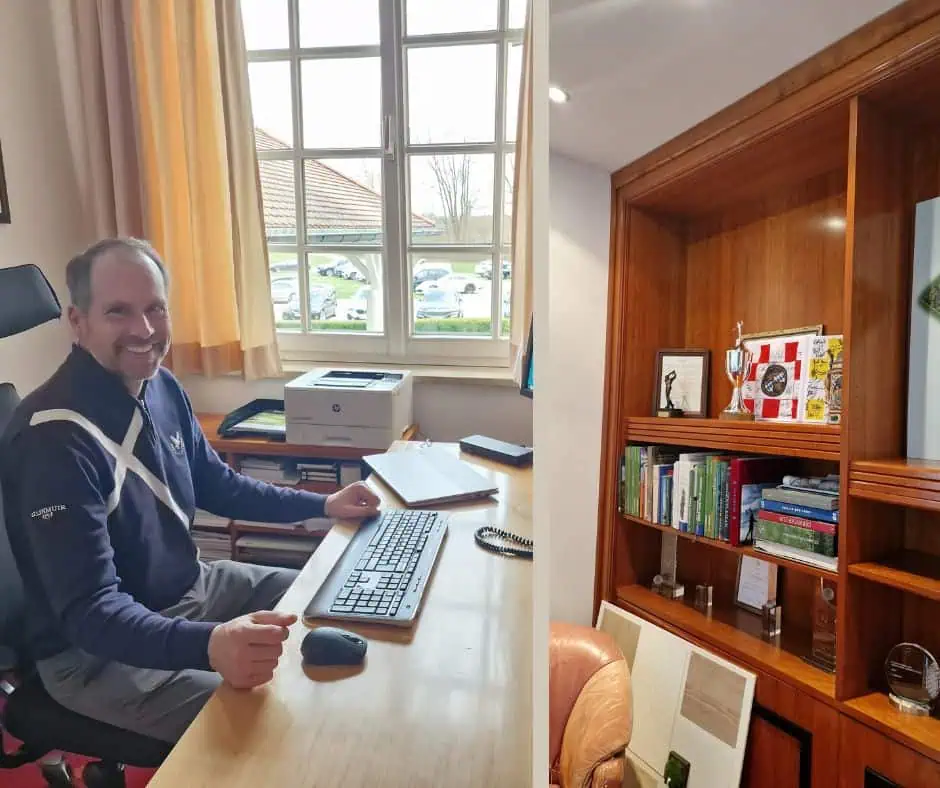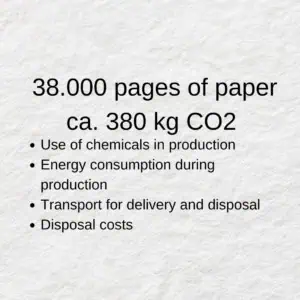The paperless golf club – here’s how it works
38,000 sheets of paper – the figure still shocks him. It was the paper consumption that Korbinian Kofler, Managing Director of the Wittelsbacher Golf Club, stated as the one-year consumption of the German golf course with an 18-hole course and small hotel for 2022. “That really blew me away,” he says today. The reason for the count was a CO₂ report. Kofler had previously thought about the diesel consumption for greenkeeping and the carbon footprint of the meat dishes on the menu. 38,000 sheets of paper as an annual consumption would never have occurred to him.
The balance sheet falls in 2022. A lot has happened since then. “We are well on the way to becoming a paperless company,” Kofler states contentedly in his office, whose desk is completely free of notepads or folders. The paperless company is a fixed concept in times of digitalization. There are plenty of tips, software, instructions and consulting companies offering their services in the field of digitalization.
Advantages and hurdles
However, a golf club is ultimately special and has its own individual challenges. Kofler has also recognized this.
- Accounting: “It’s relatively simple,” says the Managing Director. Invoicing is now digital only. Invoices are stored on an outsourced server or in a cloud. “The number of folders in my office has been minimized.”
- Document storage: The complete digitization of approval and planning documents naturally takes some time. The advantage of this is that a coherent new folder system can be created immediately.
- The employees: “All my employees were totally in favor of it,” says Kofler. Digitalization is part of a modern workplace, and younger employees in particular now expect this in a job. The golf course as a dusty relic from the paper age is not very attractive to jobseekers.
- The costs: According to Kofler’s experience, these cancel each other out compared to the classic office. After all, the company now has to invest in storage solutions, software and technology. The nine printers that were previously in operation have now been reduced to three printers and three scanners.
The advantages are obvious:
- The annual shredding of discarded documents is a thing of the past.
- The storage space for documents has shrunk rapidly.
- Access to documents has become much easier for all employees. Especially in times of home office, employees do not have to search for a folder on site, but can access the documents remotely with the necessary access authorizations.
- The environment is protected.
Implementation outside the office:
- The best way for a marshal to view start lists for tournaments or green fee players is via a tablet. This is updated immediately. There is no need to constantly print out new lists.
- Green fee tags, which are no longer common in many countries anyway, are only handed out in recycled paper at the Wittelsbacher GC. “However, our aim is to do without it completely in the long term, because visitors check in at the office anyway.”
- Tournament results: Here too, printed results lists are completely outdated internationally, whether in the USA, England or Asia. “I now only print out a list of results,” explains the Managing Director. The common practice in many German clubs that every table in the restaurant receives a list of results, which then immediately ends up in the wastepaper basket, is a thing of the past at Kofler.
The biggest hurdle:
Korbinian Kofler has now identified the biggest challenge of his paperless golf business. It’s on every table in the restaurant – it’s the menu card that golfers simply don’t want to part with. “In our case, this is really a problem because we change the menu almost every day,” summarizes Kofler for the Wittelsbacher GC, which has a first-class and thoroughly ambitious restaurant team. “This means that we print out the menu for all tables inside and outside every day.” In his experience, golfers don’t want to get used to a QR code with a menu card.
“Not yet,” says Kofler with a smile. The man is persistent. And he never wants to hand in a CO₂ report with 38,000 sheets of paper for his golf club again.








